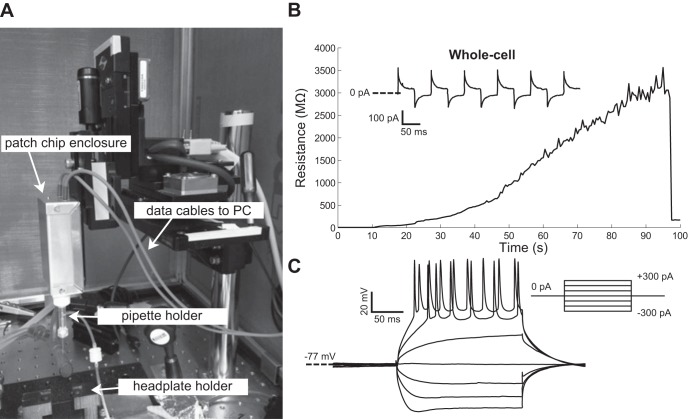Fig. 6.
In vivo PatchChip performance. A: the PatchChip (inside aluminum box with blue power/data cables) connected to the “autopatcher,” an automated in vivo patch-clamping robot. B: pipette electrode resistance measured by the PatchChip during a 100-s in vivo autopatcher experiment in which a seal of >3 GΩ was achieved using an automated robotic system incorporating the PatchChip. Successful membrane break-in to achieve whole cell configurations occurred at t = 97 s. Current traces recorded in voltage clamp in response to +5-mV, 10-Hz square-wave pulses (holding potential −72 mV) show resistive-capacitive transients typical of a whole cell patch-clamped cell (inset). C: in vivo neuron current-clamp measurements taken with the PatchChip and autopatcher system from the neuron shown in B. Action potentials were visible when the injected current exceeded 100 pA.

